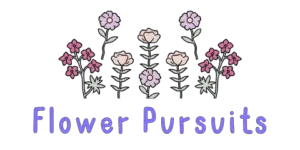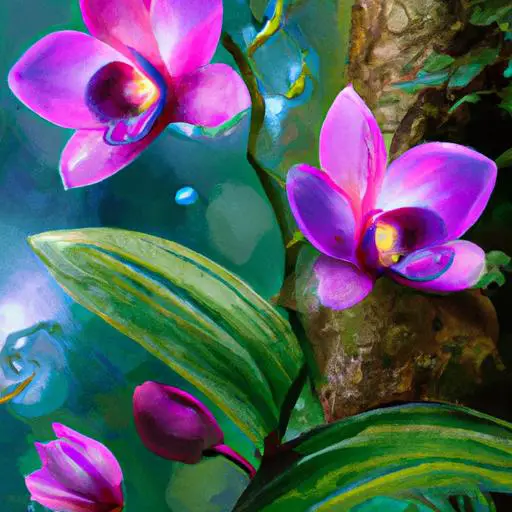Do you ever find yourself admiring the beauty of a vibrant pink orchid in your garden, and then wondering if it is related to the elegant white and yellow irises growing nearby? You wouldnt be the only one! Many gardeners find themselves intrigued by the possibility that these two popular flowers may be related.
In this article, we will take a closer look at the similarities and differences between orchids and irises to find out if they really are related.
We will explore the different families they belong to, look at variations in shape, color, and size, and discover the commonalities that make orchids and irises so popular among gardeners.
Read on to learn more!
Table of Contents
Short Answer
Orchids and irises belong to different plant families.
Orchids are part of the Orchidaceae family, and irises are part of the Iridaceae family.
However, both families are part of the larger monocot order of plants, which includes grasses, lilies, and palms.
They also both share some similar characteristics such as having showy blooms and sword-shaped foliage.
Orchid Family Overview
The Orchidaceae family is one of the largest and most diverse plant families in the world, with over 25,000 species found across the globe.
Orchids are known for their unique, exotic flowers, which come in a variety of shapes, sizes, and colors.
The flowers are often large and brightly colored, making them popular among gardeners and florists alike.
Orchids also have a complex root system, which helps them to absorb and store water and nutrients from their environment.
This makes them hardy plants that can survive in a variety of climates.
In addition to their flowers, orchids are also prized for their medicinal properties, with some species having been used for centuries in traditional medicine.
Iris Family Overview

The Iris family, or Iridaceae, is a large family of flowering plants that includes around 300 genera and between 10,000 and 15,000 species.
Iridaceae is a diverse family that includes many of the world’s most beloved and iconic flowers.
These include the large and showy bearded iris, the delicate and fragrant blue flag, the dainty and graceful Japanese iris, and the sunny and cheery daffodil.
Irises have a wide range of shapes, sizes, and colors.
They range from large and showy bearded irises to delicate and fragrant blue flags, from dainty and graceful Japanese irises to sunny and cheery daffodils.
They come in a wide range of colors, from the classic blue and purple shades to the more exotic pinks, yellows, and whites.
Irises are incredibly versatile in the garden, and they can be used in a variety of ways.
They make excellent border plants, or they can be planted in mass to create a stunning show of color.
They also look beautiful in containers, and they can be used to create a stunning focal point in a garden bed.
They are also great for cutting, and their long-lasting blooms can add a pop of color to any floral arrangement.
Differences in Shape
When you compare the shapes of orchids and irises, you will notice a few key differences.
Orchids typically have a delicate, petal-like shape, with an elongated stem that can be easily bent.
On the other hand, irises have a more traditional flower shape, with a thicker stem and wider petals.
Additionally, orchids tend to have more petals than irises, with some varieties having up to 12 petals.
The shape of the petals can also differ between orchids and irises, with orchids having petals that are often pointed and curved, while irises have petals that are flatter and straighter.
In terms of their overall size, orchids tend to be larger than irises.
Orchids can range in size from a few inches tall to more than a foot in length, while irises usually stay within a much smaller range.
This size difference can be attributed to the differences in stem thickness, as well as the number of petals each flower has.
One other key difference between orchids and irises is the way in which they grow.
Orchids are epiphytic, meaning they grow on other plants, such as trees or shrubs.
Irises, on the other hand, are typically terrestrial, meaning they grow in the ground.
This difference in growth habit affects the way in which they are cared for and cultivated, as orchids require more specialized care than irises.
Differences in Color

When it comes to differences in color, orchids and irises vary widely.
Orchids tend to be large and brightly colored, often featuring vibrant pinks, purples, and whites.
In contrast, irises are usually smaller and feature more subtle coloration, such as blues, yellows, and whites.
While the vibrant colors of orchids are eye-catching, the more demure colors of irises can add a soft and tranquil touch to a garden.
In addition, some orchids have unique markings or patterns, such as stripes or spots, that can add visual interest.
When it comes to color, orchids and irises can also have similar colors, making it difficult to tell them apart.
For example, white orchids and white irises can both be found in gardens.
In this case, it is important to look at the size, shape, and structure of the flower to identify the plant correctly.
While orchids tend to be larger, irises are typically smaller, and the petals of an orchid can be more ruffled than the petals of an iris.
Additionally, the leaves of an orchid are typically longer and narrower than those of an iris.
Differences in Size
Orchids and irises are both flowering plants, but they differ significantly in size.
Orchids tend to be larger and showier than irises, with blooms that can be up to a foot in diameter.
In contrast, irises tend to be smaller, with blooms that are usually no more than four inches across.
This difference in size makes them ideal for different types of gardens.
Orchids are perfect for larger gardens, where their showy blooms can really stand out.
Irises, on the other hand, are better suited for smaller, more intimate gardens, where their delicate blooms can be appreciated up close.
Commonalities of Orchids and Irises

While orchids and irises may not be closely related, they do have some similarities.
Both plants belong to the monocot order Asparagales, meaning they have a single seed leaf.
This single seed leaf is a defining characteristic of all monocot plants, and is the reason why orchids and irises have similar structures and growth patterns.
Another similarity between the two plants is that they both require high levels of humidity to thrive.
Orchids will not survive in a dry environment, and irises need a certain amount of moisture to keep their flowers and stems healthy.
Both orchids and irises also have a wide range of colors, shapes, and sizes.
Orchids are known for their large and showy blooms, while irises are more subtle with their colors and shapes.
Whether youre looking for a large pop of color or a more subtle and delicate look, both plants can provide the perfect addition to any garden.
Popularity Among Gardeners
Orchids and irises are both popular among gardeners, for different reasons.
Orchids are prized for their unique and exotic beauty, with some varieties having intricate patterns and colors that make them stand out from other plants.
Irises, on the other hand, are favored for their hardiness and versatility; they can be used as ground cover, edging plants, or even in flower beds for a unique and colorful display.
Orchids are also popular because of their ability to bloom for long periods of time, often lasting for months if given the right care.
Irises, although they tend to have shorter bloom cycles, come in an array of different colors and can be used to create a variety of different looks in a garden.
Both plants require careful and consistent attention and maintenance to ensure their survival and continued growth, making them a favorite among gardeners who are willing to put in the extra effort.
Final Thoughts
Orchids and irises are both beautiful and popular flowering plants, but they are not related.
Orchids are in the Orchidaceae family, while irises are in the Iridaceae family.
These plants differ in their shapes, colors, and sizes, but both are admired for their beauty and enjoyed by gardeners.
To gain a better understanding of these plants, we recommend studying their many characteristics and deciding which type of flower would be best for your own garden.

